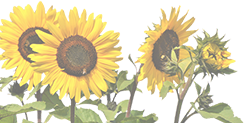
What Container to Use and Why?
By Chris Edmunds

Choosing the type of container is just as important as planning your flower arrangements. Which color, texture, size, and material to use depends on the design of your container garden and how full or spacious you want your container to look.
There are a lot of materials to choose from for containers, including plastic, wood, metal, clay, and many others. When picking your container, it is important to consider how durable it will be. Will it hold enough moisture for hot windy days? Is it big enough? Is there good drainage? You’ll want to ensure that your container has sufficient depth, width, drainage, and weight to enjoy a beautiful, summer garden.
Size & Drainage
The size and drainage of your container are important factors for a healthy container garden. You’ll want to choose containers that have an adequate number of holes in the bottom for drainage. After placing a layer of soil in your container, pour water in the container to see how much water goes through. You’ll be able to see right away if there is enough drainage.
For summers in our part of the world, bigger containers are better. Larger containers will hold more moisture. For a long-lasting garden, and to withstand our area’s wind and heat, you’ll want to pick pots that are, at the very least, 12 inches in diameter (though 24” would be better!). Another factor to consider is depth. For your plants to thrive, you’ll want to choose containers that give enough space for the roots to grow, while maintaining moisture. When planting annuals or vegetables, choose a container with a depth of at least 14 inches but, again, bigger is better.
Hanging Baskets
The same principle applies to hanging baskets—the bigger the better. Porous materials, such as coco fiber or Spanish moss baskets, are especially vulnerable to drying out. It would be best to use a plastic liner with just a 1” slit at the bottom for drainage. Unless you are willing to water twice a day, we recommend 12” as a minimum size for baskets hanging in sun. If you buy plants in a basket smaller than 12”, you will need to shift them to a larger one.
 Glazed Ceramics
Glazed Ceramics
A durable and long-lasting pot starts with the clay. Our garden center in Mission, Kansas only carries pots made from high-quality clay and we choose our finishes for design and durability.
Another popular material for containers is glazed clay. You can choose from a large selection of colors to match your garden theme! Glazed ceramics are heavy, so you don’t have to worry about being top heavy and falling over when planting a larger plant.
Glazed ceramics are still made out of clay, but the glaze prevents plant root’s from drying out too fast. This means you don’t need to water your plants as often during the summer.
If you leave glazed ceramics outside during the colder months, you’ll want to remove the soil or, at least, cover your pot to protect your plants from freezing.
Lightweight Cement
Lightweight cement is an up-and-coming material. It is made up of a blend of cement and fiberglass. It is durable and not as heavy as ceramic. It allows the makers to incorporate interesting textures and adornments, such as mosaic tiles and even mirrors.
Stop by any of our garden centers for our large selection of terra cotta, colorful glazed ceramics, and lightweight cement in every color, shape, and size.
 Spacing and How Many to Plant:
Spacing and How Many to Plant:
The number of plants you put into each container depends on how fast you want it to fill out. A less crowded container gives more air flow and light, which allows your plants to last longer through the season without getting scraggly-looking. You can plant as few or as many plants as you want in your container garden, depending on your container garden design. If you want it to fill out and look fabulous sooner, use more. If you can wait, use fewer. You can always trim back some growth, or even dig out some plants if it starts looking crowded, or to keep it in balance.
Most of the annuals and bedding plants at our garden centers come in 4-packs or pint pots. You’ll want to refer to the plant’s tag for spacing; smaller spacing means the mature plant is small and less aggressive, while larger spacing means the fully-grown plant is larger. For filler plants, you’ll want to plant one to two inches from the edge of the containers, so the foliage can spill over.
Here is a guide on how many plants to put in your container depending on the size of the container.
-
12-inch pot: 4 - 6 plants
-
14-inch pot: 7 - 8 plants
-
16-inch pot: 8 - 9 plants
-
18-inch pot: 10 - 11 plants
-
22-inch pot: 12+ plants
The material of your container can add to or blend in with your beautiful masterpiece. As long as your container has enough drainage, depth, and weight to ensure a healthy garden, you can be successful.

